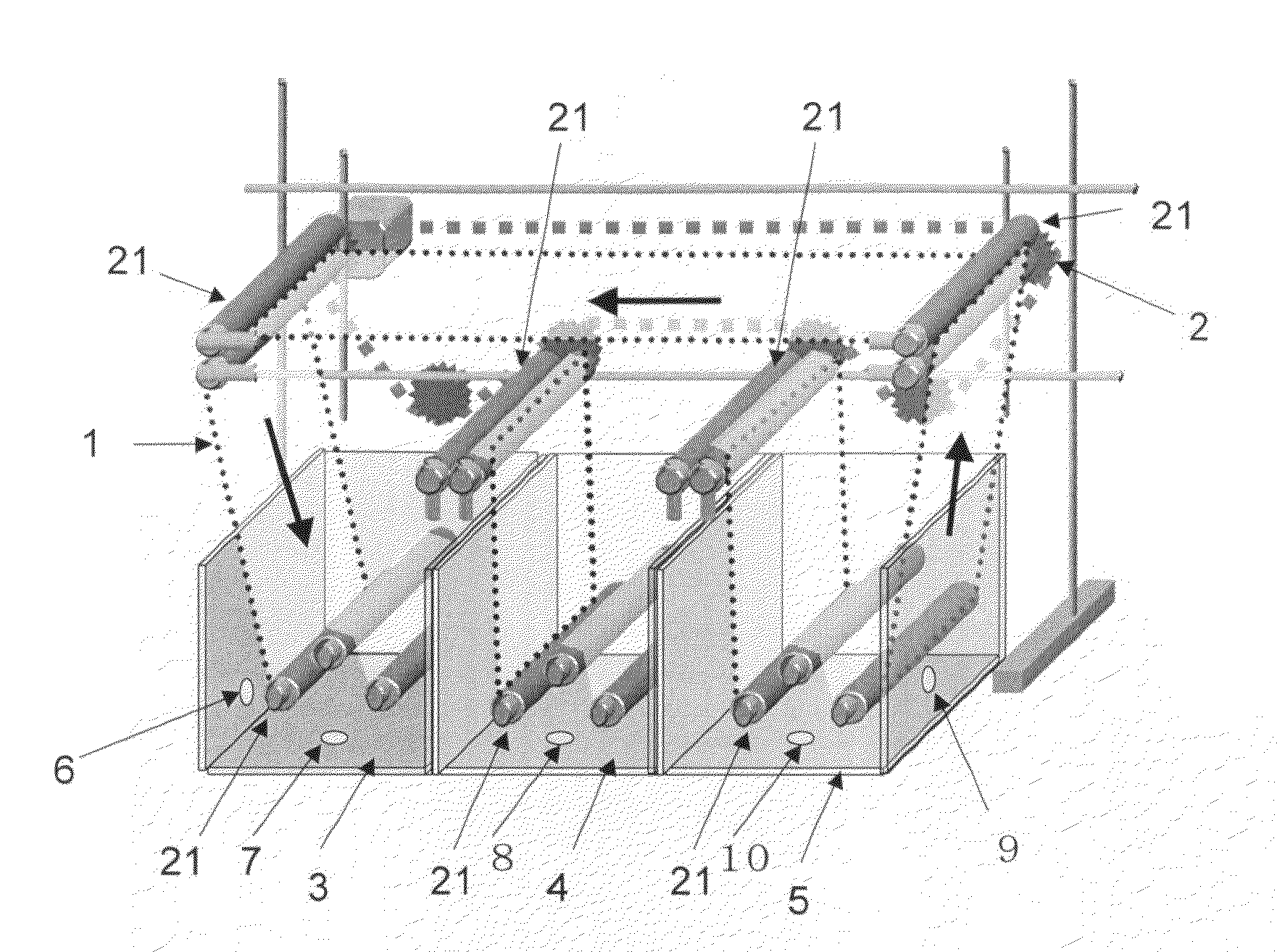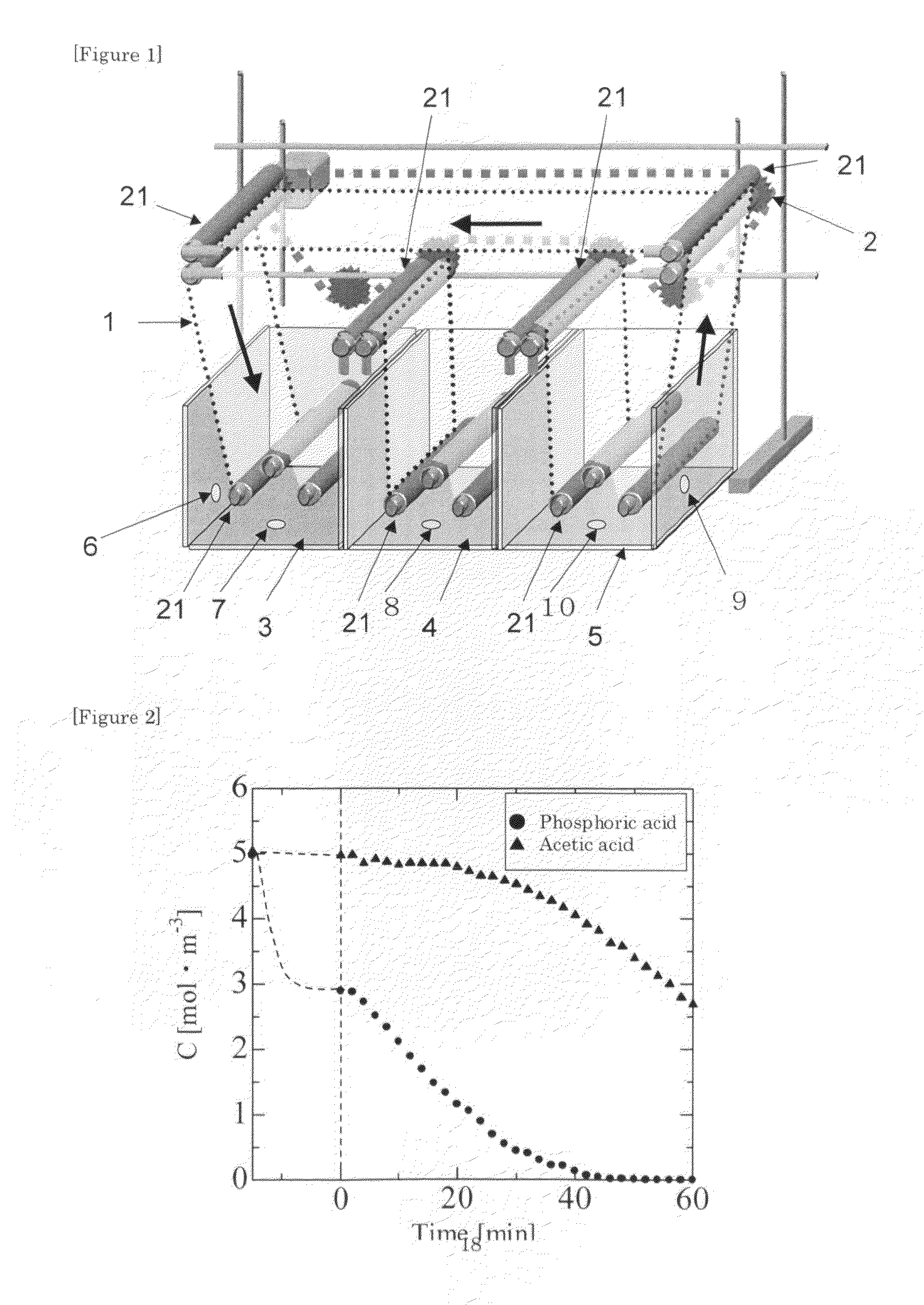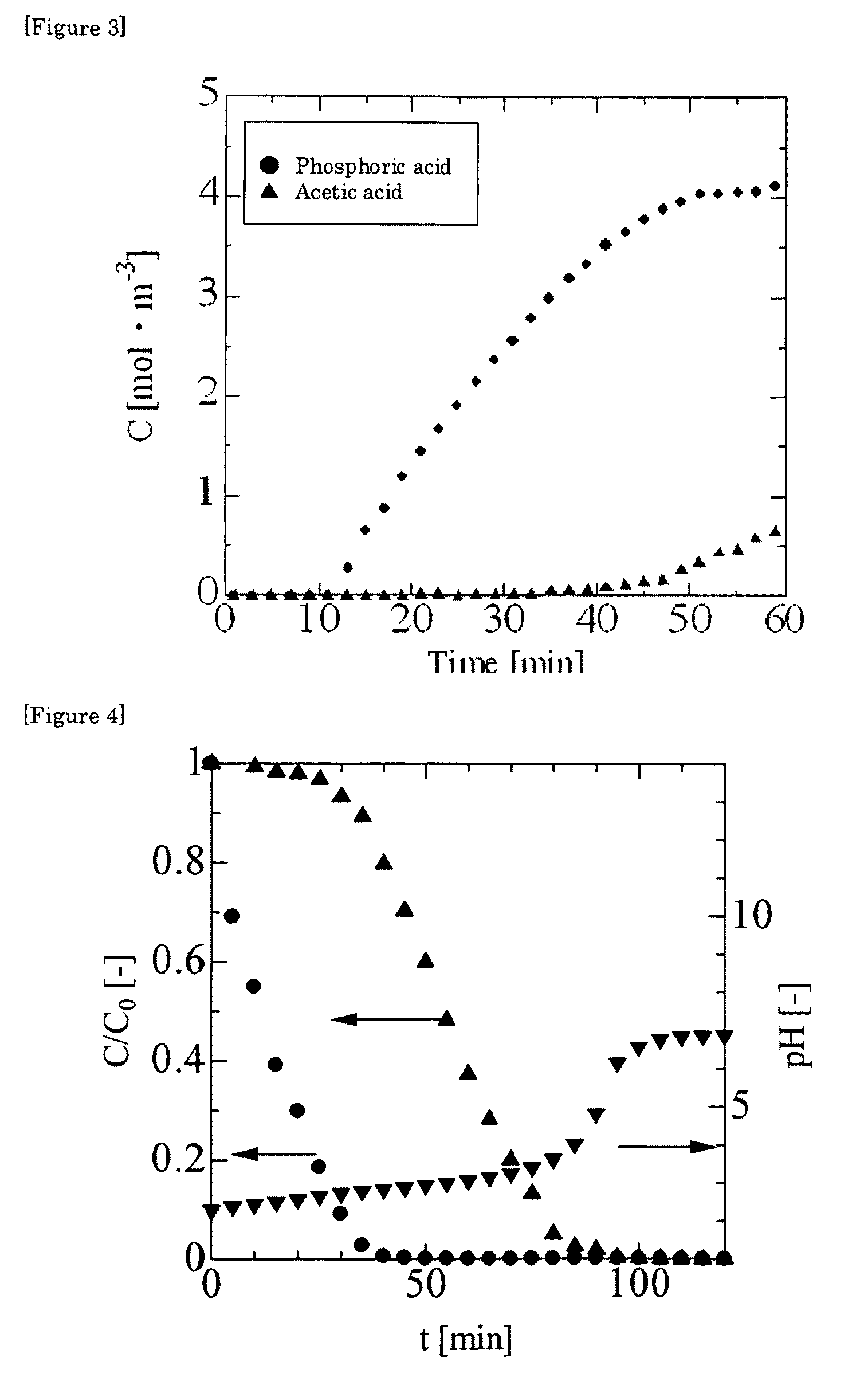Apparatus for separating adsorbate and method of continuously separating adsorbate
- Summary
- Abstract
- Description
- Claims
- Application Information
AI Technical Summary
Benefits of technology
Problems solved by technology
Method used
Image
Examples
example 1
[0060]The apparatus shown in FIG. 1 was used. The loop adsorbent 1 used was a fabric of “Nitivy Ion Exchange Fiber” produced by Nitivy Co., Ltd. having a total length of 3 m and a width of 20 cm. The two-component solution used was an aqueous solution containing phosphoric acid (5 mol / m3) and acetic acid (5 mol / m3).
[0061]First, the loop adsorbent 1 was moistened with purified water. The loop adsorbent 1 is left still at the time. The aqueous phosphoric acid and acetic acid-containing solution was placed next in the adsorption tank 3, and an aqueous 5 mol / m3 sodium hydroxide solution in the elution tank 4, respectively in amounts of 30 L. The stirring devices and temperature-controlling devices were then initiated, and the temperature of the liquids in the adsorption tank 3 and the elution tank 4 were adjusted to 25° C. The rotational frequency of the stirring devices was 2500 rpm.
[0062]The liquids in the adsorption tank 3 and the elution tank 4 adjusted to a temperature of 25° C. we...
example 2
[0068]The apparatus shown in FIG. 1 was used. The loop circular adsorbent 1 used was a fabric of “Nitivy Ion Exchange Fiber” produced by Nitivy Co., Ltd. having a total length of 2.4 m and a width of 12 cm. The two-component solution used was an aqueous solution containing phosphoric acid (10 mol / m3) and pyroglutamic acid (10 mol / m3), and the elution solution used was 50 mol / m3 aqueous sodium hydroxide solution. Adsorption and elution of phosphoric acid and pyroglutamic acid were studied in a manner similar to Example 1, except that the amounts of the liquids in the adsorption tank and the elution tank were respectively 10 L. Results are summarized in FIGS. 4 and 5. The concentration of phosphoric acid and pyroglutamic acid was determined in a manner similar to Example 1.
[0069]FIG. 4 is a graph showing the change over time in the concentration of phosphoric acid and pyroglutamic acid contained in the solution of adsorption tank 3. FIG. 5 is a graph showing the change over time in th...
PUM
| Property | Measurement | Unit |
|---|---|---|
| Solubility (mass) | aaaaa | aaaaa |
| Adsorption entropy | aaaaa | aaaaa |
Abstract
Description
Claims
Application Information
 Login to View More
Login to View More - R&D
- Intellectual Property
- Life Sciences
- Materials
- Tech Scout
- Unparalleled Data Quality
- Higher Quality Content
- 60% Fewer Hallucinations
Browse by: Latest US Patents, China's latest patents, Technical Efficacy Thesaurus, Application Domain, Technology Topic, Popular Technical Reports.
© 2025 PatSnap. All rights reserved.Legal|Privacy policy|Modern Slavery Act Transparency Statement|Sitemap|About US| Contact US: help@patsnap.com



